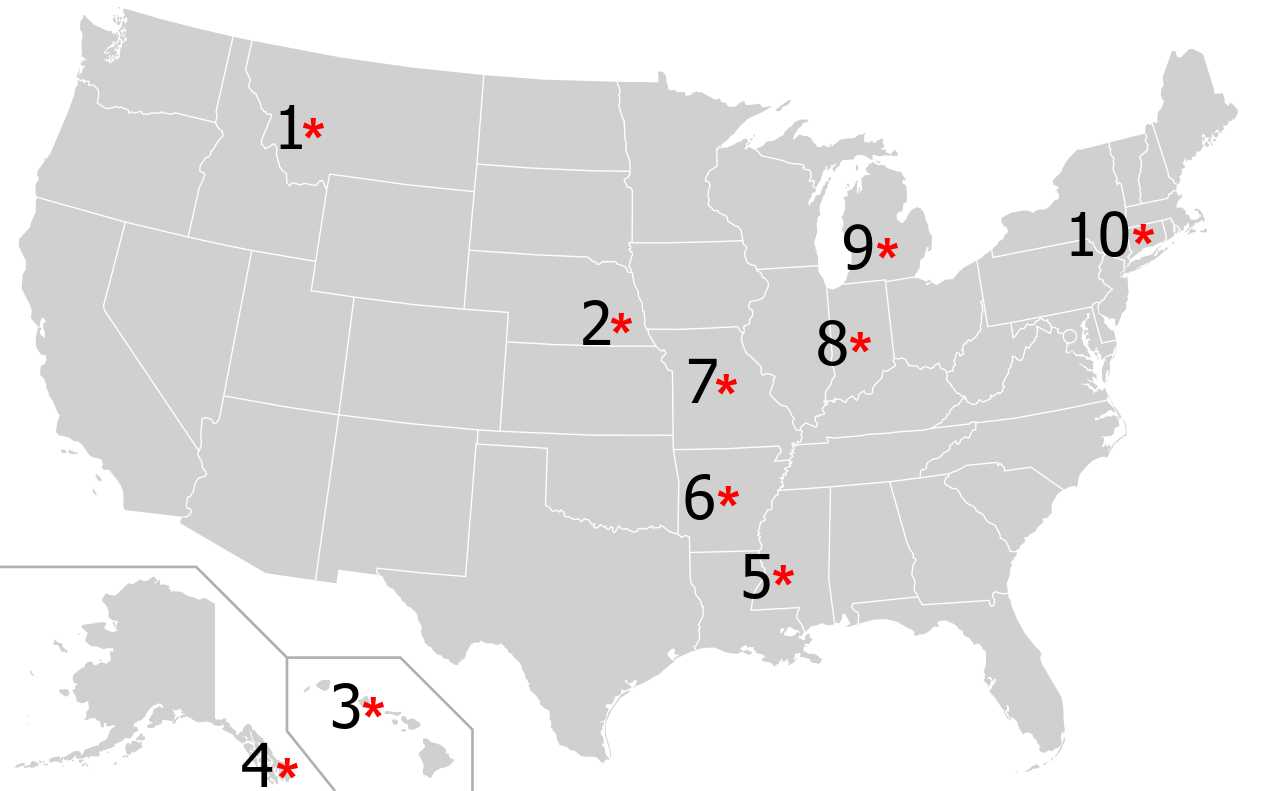
Alphabetical America, Part Three Quiz
The next in my series of labeling US State Capitals, featuring the middle set of ten cities ordered alphabetically (by city name, not state). Can you match the correct capital city name (Hartford to Little Rock) to its geographical location?
A label quiz
by reedy.
Estimated time: 3 mins.
